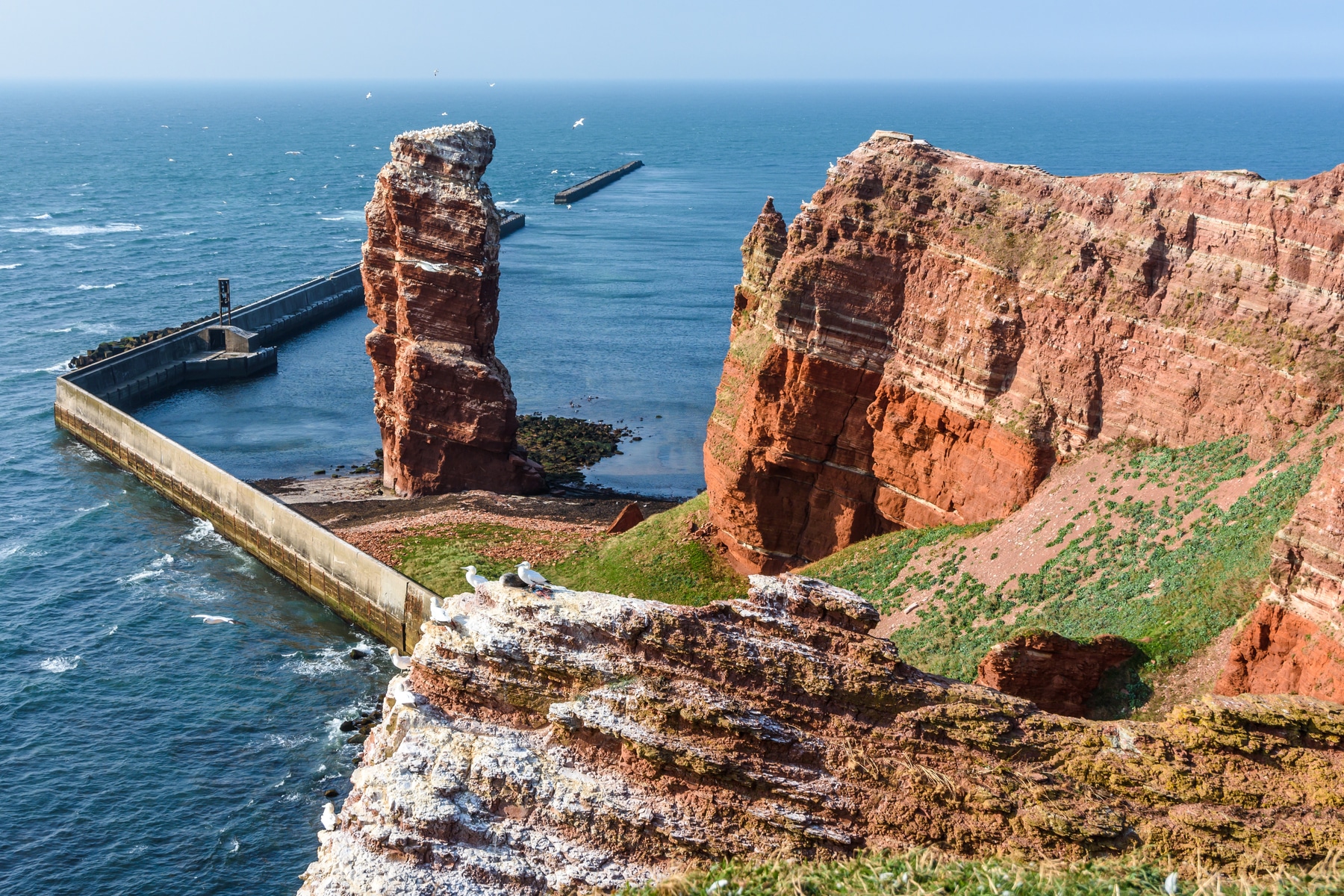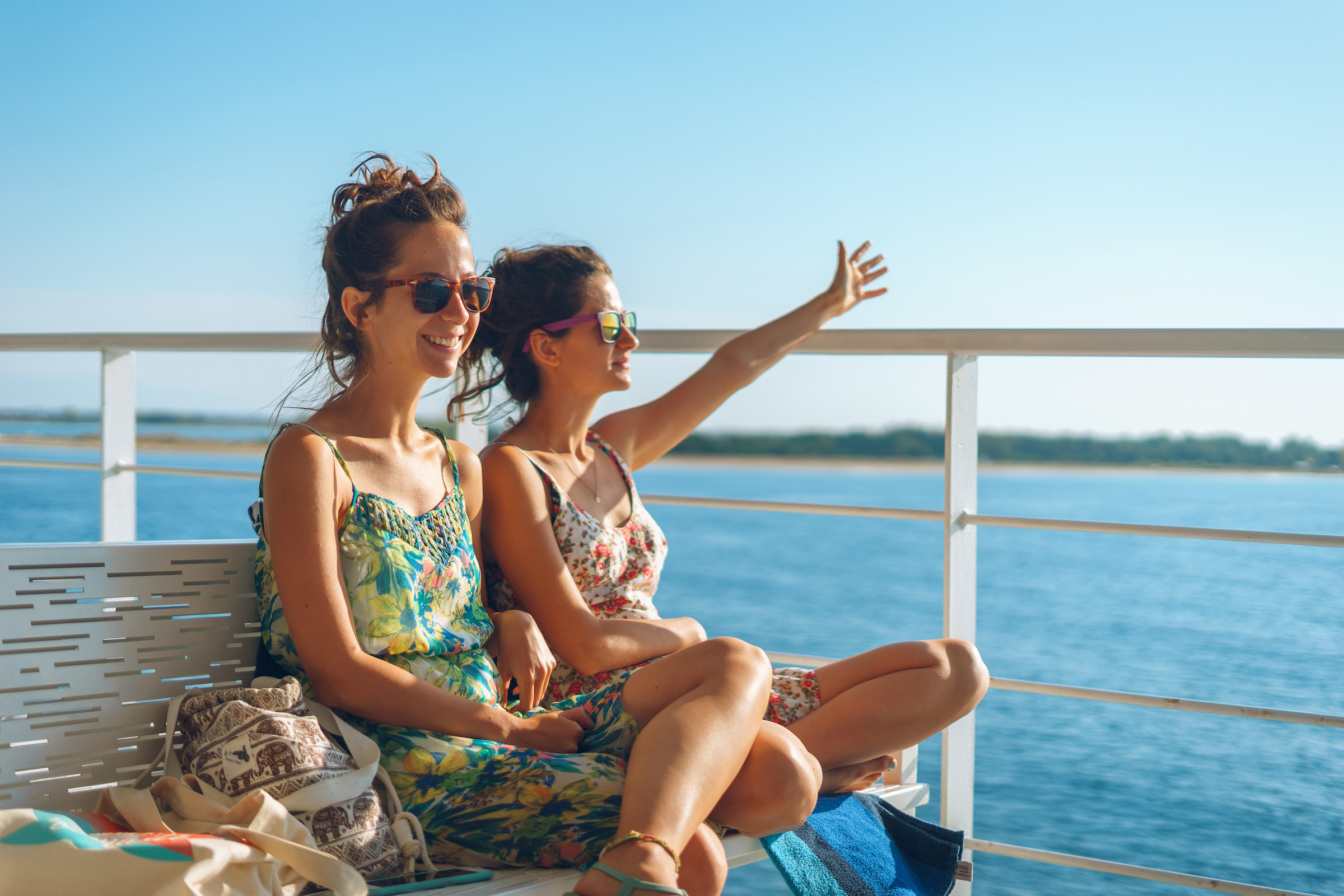- Home ›
- Germany ›
- Schleswig-Holstein ›
- Islands
Facts and figures about Helgoland
Helgoland is located in the German Bight about 70 km from the mainland and belongs to the district of Pinneberg in Schleswig-Holstein with about 1400 inhabitants. As a result of a storm tide, the connection between the main island and the dune of Helgoland was severed in 1721. Today, Helgoland thus consists of a 1 km² main island with a steep coast and an offshore neighboring island, the so-called "Badedüne", which covers an area of 0.7 km². Despite belonging to Germany, some islanders speak the ancient island language "Helgoländisch", alternatively known as "Halunder", in addition to High German. However, the use of the island language has declined more and more in recent years.
Flora and fauna of the island
Helgoland impresses first and foremost with its impressive landscapes and natural assets. The special flora and fauna of the island can be traced back to the occurrence of red sandstone, shell limestone and chalk. Also as a result of Helgoland's favorable geographical location, a large number of rare plants and animals can be found here. These include wild forms of well-known cultivated plants of the German mainland. A special feature of Helgoland's fauna is represented by the numerous grey seals, which are mainly located on the "Badedüne". Between November and January, the seals give birth to their young here every year. In addition, Helgoland is a stopover for a large number of migratory birds in spring and autumn. Thus, on the bird rock, the so-called "Lummenfelsen", more than 5000 pairs of birds can be observed every year. The "Lummenfelsen" is therefore considered the smallest nature reserve in the world. Among the bird species that appear are the seabird gannet of the North Atlantic, the kittiwake, the razorbill, the fulmar and the guillemot. The latter, due to its high occurrence, represents the character bird of the island of Helgoland. The "guillemot jump", which takes place between June and July and involves the young jumping from a rock into the water shortly after their birth, is a popular natural spectacle among tourists. Right next to the "Lummenfelsen" is the "Lange Anna", the landmark of the island of Helgoland. This is a red stone colossus that juts out of the water on the north side of the island.
Geographical position of Helgoland
Helgoland is unique not only in terms of its flora and fauna, but also in terms of its geographical location. The island does not lie on a single contour line, but is divided into the lower, middle and upper land. To get to the Oberland, there is an elevator on the island, which connects the Unterland and Oberland. In addition, the upper land can also be reached by a staircase with a total of 184 steps. On the upper land there is a historical lighthouse with a height of 35 meters. It is considered the only building on the island that withstood the bombardments during the Second World War. While it functioned as an anti-aircraft control post during the war, today it represents the lightest beacon in the German Bight with a range of about 52 km. The island's history can also be seen in the kilometer-long underground bunkers, which can be visited as part of a guided tour over a distance of 400 meters. However, the exact extent of the shelters and tunnels on Helgoland is still unclear today. Likewise, during a vacation on Helgoland, tourists can discover the "Berlin Bear" on the upper land, which looks in the direction of the German capital Berlin. Through this, the statue should serve as an orientation aid for tourists.
The highlight of the "Badedüne
The biggest sight of Helgoland is the so-called "Badedüne", which is placed about one kilometer next to the main island and can be reached via the dune ferry services. The "Badedüne" was initially connected to the main island via a wall of sand before it was separated from the island by a storm tide in 1721. Tourists can explore the nature of the island in a quiet atmosphere on an area of about 1 km long and 700 m wide. Thus, the dune is hardly touched by mass tourism and is therefore especially suitable for vacationers who are mainly looking for peace and nature. Also for fossil collectors the dune is an interesting attraction due to various fossils. A special feature is the red flint, which can only be found in the area of the "bathing dune" of Helgoland. Due to its worldwide unique geological feature, the flint is also called "red diamond" and is nowadays processed into valuable pieces of jewelry. The dune also has two wide sandy beaches, which invite you to sunbathe and swim during a vacation on Helgoland. The southern beach, with its calm waters and wide sandy areas, is primarily suitable for families with children. The north beach, on the other hand, impresses with its swell and a large number of seals. The eastern part of the "Badedüne", marked by the name "Aade", is also worth seeing during a vacation on Helgoland. Here, the surf creates a natural spectacle in which a large number of pebbles are moved in such a way that an impressive sound pattern develops. In addition, there are sufficient catering facilities for tourists in this island region with a supermarket and two restaurants.
Other sights of the island
Other popular sights of Helgoland are the historic lobster stalls at the island's harbor, which are mainly notable for their colorful paintings and represent former fishermen's workshops. Holidaymakers can obtain information on Helgoland's eventful history at the "Inselmuseum Helgoland". In addition, this island museum has a "James Krüss Museum". Memories of the writer and poet James Krüss, who was born on Helgoland, have been compiled in the museum's courtyard in replica lobster stalls in the form of photos, CDs, letters and TV clips. Helgoland's directional radio tower is also considered a popular sight on the island due to its special architecture. It is located on the Oberland near the lighthouse. Here you can also visit the church of St. Nicolai. It is characterized by an ancient interior architecture, which partly belonged to the old island church, which was destroyed by an attack in April 1945 during the Second World War.
Helgoland as a seaside resort
Ultimately, however, Helgoland not only has the status of an adventure island, but is also known for its designation as an attractive health resort. Helgoland, for example, is considered to have the highest iodine and oxygen content in Germany and is therefore one of the most significant seaside spas in Europe. Due to its geographical location, the island is characterized by a healing high-sea climate, which has a health-promoting effect on the human body. Especially people with respiratory diseases and allergies can benefit from the lack of pollen and the low level of dust particles on the island. The climate of Helgoland, which is pleasant all year round due to the sea water, also has a positive effect rheumatic diseases, circulatory disorders and respiratory infections.


